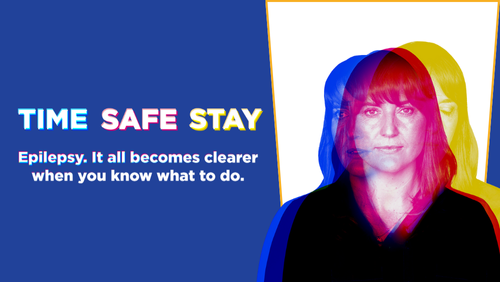
Sometimes things are just clearer when you know what to do. Seizure first aid is no different when you remember the key words of TIME, SAFE, STAY
But what do we mean by TIME, SAFE, STAY?
TIME
The first thing you should do is TIME the seizure. This is because if a seizure goes over five minutes, an ambulance should be called.
Note that convulsive seizures typically last less than 2 minutes. The person’s body may go from jerking into what looks like sleep; this is normal and classed as the recovery period. If the person’s body is still seizing (jerking) at 5 minutes, an ambulance should be called as this is classed as an emergency.
SAFE
Keep the person SAFE during the seizure. If a person is having a convulsive seizure, cushion their head with something soft if possible and remove any harmful objects, e.g. furniture from their vicinity. NEVER put anything in a person's mouth or restrain them during a seizure.
Be aware that there are also types of seizures where the person does not experience convulsions. Instead, they may “zone out” or stare blankly, become confused or agitated, display behaviours like chewing, smacking their lips, tugging at their clothes, or wandering aimlessly. In this type of seizure, the person’s awareness of their surroundings is affected, and it is important to gently guide the person away from any danger. As with convulsive seizures, never restrict the person’s movements.
STAY
During the seizure and after it passes, STAY with the person. Often, after a seizure, a person with epilepsy will be confused and in many cases, exhausted. Stay with them until recovery is complete, explain what has happened and gently reassure them. The person may have experienced an injury if they have fallen, so, ensure normal first aid steps are taken.
TIME – SAFE – STAY makes it clear on how you should respond to a seizure!
When should I call an ambulance?
- Call an ambulance if the seizure lasts for more than 5 minutes.
- Call an ambulance if a person having a seizure briefly comes out of it and goes into another one. This ties into point one. Both scenarios are potentially very dangerous for the person, so they need expert care.
- Call an ambulance if you know it’s a person’s first seizure or if you’re not sure whether the person has epilepsy or not (often a person with epilepsy will have a bracelet or card in their wallet/purse indicating they have epilepsy.)
- Call an ambulance if the person is physically injured e.g. if they have taken a heavy fall during their seizure.
- Call an ambulance if the person is pregnant as a precautionary measure in case any checks need to be carried out.
- Call an ambulance if you’re in any doubt – this is the most important point of all. No–one is going to be annoyed at you for calling an ambulance out of real concern; not the person who’s having the seizure and not the ambulance crew.
Download our Posters!
We recommend downloading our seizure first aid posters for both convulsive and non-convulsive seizures. With approximately over 45,000 people living with epilepsy in Ireland, save these posters to your phone or print them and display them in your workplace. You never know when you might need to use them.
- Download the posters for both convulsive seizures and non-convulsive seizures from our website.
- Download Seizure first aid posters for convulsive seizures from our website
- Download our Seizure first aid posters for non-convulsive seizures from our website
Further information
If you’d like to learn more about epilepsy, the Epilepsy Information section of our site has in-depth details on epilepsy and various booklets which may be of assistance. Epilepsy Ireland also has a team of Community Resource Officers across Ireland. Our Community Resource Officers are there to assist people with epilepsy and their families on their journey with the condition but also to provide information and support around epilepsy to their communities. Please do not hesitate to get in touch if we can be of assistance.
